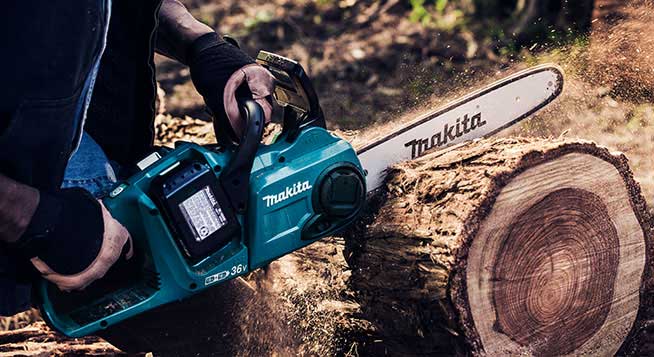Sharpening a chainsaw chain is a crucial skill that every chainsaw user should possess to ensure optimal cutting performance, safety, and efficiency. While the process may seem daunting at first, with the right tools, techniques, and know-how, sharpening a chainsaw chain can be a straightforward and rewarding task. In this article, we'll provide a step-by-step guide on how to sharpen a chainsaw chain like a pro, empowering you to maintain sharp, reliable cutting edges for your chainsaw.
1. Gather the Necessary Tools and Equipment:
- Round Chainsaw File: Select a round chainsaw file that matches the size of your chainsaw's chain. Refer to your chainsaw's manual or the markings on the chain to determine the appropriate file diameter.
- File Guide or Filing Jig: A file guide or filing jig helps maintain the correct filing angle and ensures consistent sharpening across the chain's cutting teeth. Choose a guide that fits snugly over the chain and provides stability during sharpening.
- Flat File or Depth Gauge Tool: In addition to sharpening the cutting teeth, you may need a flat file or depth gauge tool to maintain the depth and uniformity of the chain's depth gauges or rakers.
- Gloves and Eye Protection: Safety should always be a priority when working with chainsaws and sharpening equipment. Wear sturdy gloves and eye protection to protect your hands and eyes from debris and sharp edges.
2. Secure the Chainsaw and Chain:
- Secure the Chainsaw: Place the chainsaw on a stable surface and engage the chain brake to prevent accidental movement. If possible, clamp the chainsaw securely to a workbench or sawhorse to stabilize it during sharpening.
- Position the Chain: Rotate the chain manually or engage the chainsaw's clutch to move the chain to a comfortable working position. Ensure that the chain is tensioned properly and that the cutting teeth are easily accessible for sharpening.
3. Identify the Correct Filing Angle:
- Consult the Manufacturer's Recommendations: Refer to your chainsaw's manual or the manufacturer's guidelines to determine the recommended filing angle for sharpening the chain. Common filing angles for chainsaw chains range from 25 to 35 degrees, depending on the chain's design and application.
- Use a Filing Guide: Attach the filing guide or jig to the chain, aligning it with the markings on the guide corresponding to the desired filing angle. The guide will help maintain a consistent angle as you sharpen each cutting tooth.
4. Sharpen the Cutting Teeth:
- Start with the First Tooth: Begin sharpening at the point where the chain rotates around the guide bar. Insert the round chainsaw file into the filing guide, positioning it perpendicular to the chain's direction of travel.
- Apply Light Pressure: With a smooth, even motion, push the file across the face of the cutting tooth, following the contour of the tooth's profile. Apply light pressure and maintain a steady pace to remove material evenly and avoid overheating the tooth.
- Repeat for Each Tooth: Continue sharpening each cutting tooth along one side of the chain, ensuring that you file each tooth the same number of strokes to maintain uniformity. Once you've completed one side, rotate the chainsaw or flip the filing guide to access the teeth on the opposite side of the chain.
5. Check and Adjust Depth Gauges:
- Inspect Depth Gauges: After sharpening the cutting teeth, inspect the depth gauges or rakers to ensure they are at the correct height relative to the sharpened cutting teeth. Use a depth gauge tool or flat file to adjust the height of any protruding gauges, following the manufacturer's specifications.
6. Maintain Consistency and Balance:
- Alternate Sides: To maintain balance and consistency in the chain's cutting performance, alternate the direction of sharpening strokes between each tooth. This helps prevent uneven wear and ensures uniform cutting efficiency across the entire chain.
- Monitor Progress: Periodically stop and inspect the chain to assess your progress and ensure that each tooth is sharpened to the desired angle and profile. Make any necessary adjustments to your filing technique to achieve consistent results.
7. Test the Sharpness:
- Perform Test Cuts: Once you've sharpened the entire chain and adjusted the depth gauges, reassemble the chainsaw and perform test cuts on a suitable material to gauge the sharpness and cutting performance of the chain. Adjustments may be necessary based on the results of the test cuts.
8. Regular Maintenance and Inspection:
- Schedule Routine Maintenance: Incorporate chainsaw chain sharpening into your regular maintenance routine, aiming to sharpen the chain before it becomes excessively dull or worn. Regular sharpening helps prolong the lifespan of the chain and ensures optimal cutting efficiency.
- Inspect Chainsaw Components: Along with sharpening the chain, inspect other chainsaw components such as the guide bar, sprocket, and drive links for wear, damage, or signs of fatigue. Address any issues promptly to prevent premature chain wear or damage.
Conclusion:
In conclusion, sharpening a chainsaw chain is a fundamental skill that every chainsaw user should master to maintain cutting performance, safety, and efficiency. By following the steps outlined in this guide and using the appropriate tools and techniques, you can sharpen your chainsaw chain with confidence and precision, ensuring sharp, reliable cutting edges for your chainsaw's optimal performance.




More Stories
Maximizing Efficiency and Precision with Horizontal Machining Centers
Mini Single Screw Extruder: Precision Engineering and High-Performance Application Guide
How a laser wire marking machine Enhances Identification Accuracy in Modern Cable Manufacturing